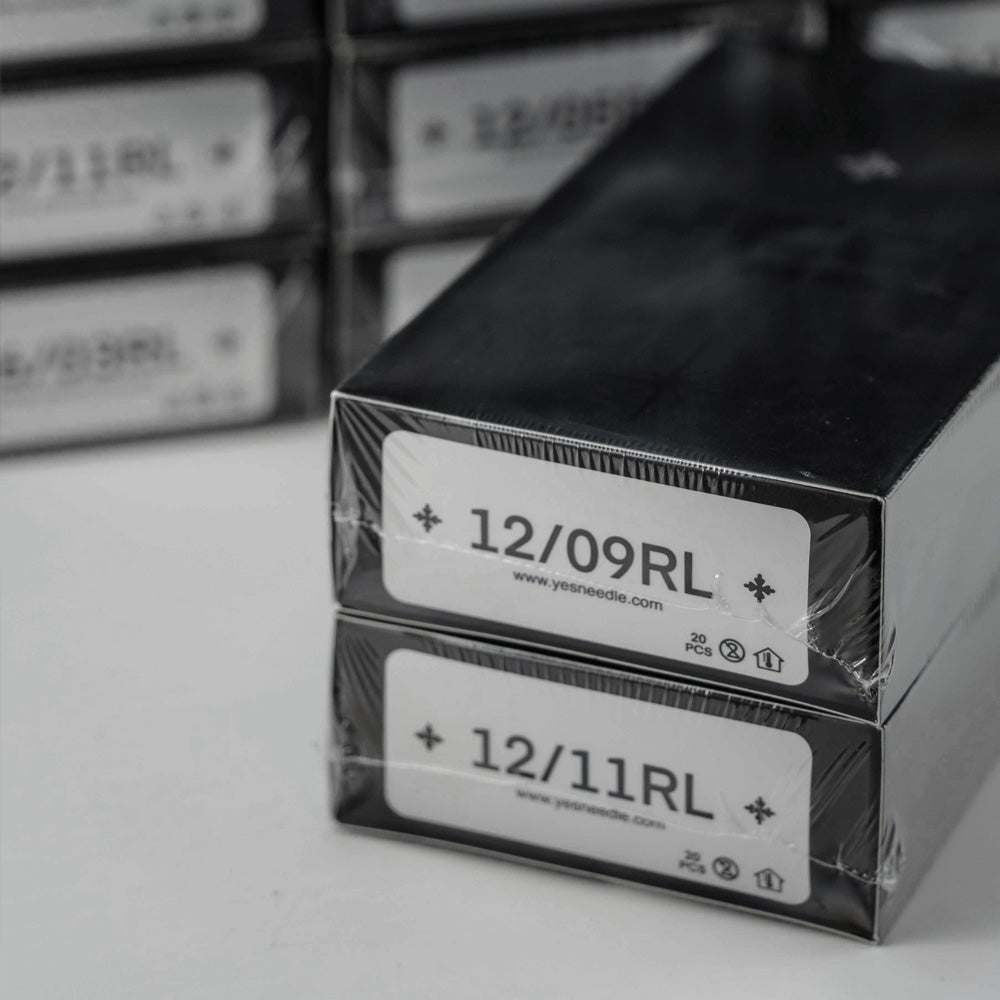Can You Tattoo White Over Black? Complete Guide to White Ink Tattoos & Fading
Why White Tattoo Work Is More Challenging Than It Looks
I'll be honest - when clients first started asking for white ink tattoos, I thought it would be easy. Just switch out the black ink for white, right? Wrong. White tattoo work is one of the most technically demanding and unpredictable techniques you can master.
White tattoos have exploded in popularity for their subtle, ethereal appearance. But here's what most artists learn the hard way: white ink behaves completely differently from traditional colors, requires different techniques, and comes with unique challenges that can make or break your reputation.
What Makes White Ink Tattoo Different for Artists
White tattoo ink has a thicker consistency than black or colored inks, making it harder to achieve clean lines and smooth application. It's also translucent, meaning the client's natural skin tone affects the final appearance.
Key Differences:
· Thicker viscosity requiring different needle techniques
· Translucent properties that interact with skin pigmentation
· Faster fading and color changes over time
· Higher risk of appearing raised or scarred
Skin Color Considerations
White ink tattoos on pale/fair/light skin: Show best contrast and longest-lasting results White ink tattoo on dark skin: Often appears grayish due to melanin interaction White tattoos on black skin: Significant challenges with visibility and color distortion
The Honest Reality: How Long Do White Ink Tattoos Last?
Realistic Timeline from Experience
Year 1: Most white tattoos remain relatively visible
Years 2-3: Noticeable fading begins, often into cream or yellow tones
White ink tattoo after 5 years: Usually fade to barely visible flesh-colored marks
Do White Tattoos Fade? The Answer Every Artist Needs
Yes, all white tattoos fade significantly faster than traditional tattoos. The question isn't if they'll fade, but how quickly and what they'll look like healed.
Healed white ink tattoo reality: Often appears completely different from fresh application, sometimes resembling scars more than tattoos.
Working with Different Skin Tones: What Actually Works
White Ink Tattoo on Black Skin
This is where many artists struggle. White ink tattoos on black skin often result in gray or muddy appearances due to melanin interaction. Many experienced artists recommend against white-only designs for darker complexions.
Black people with white tattoos: Results vary dramatically and often disappoint clients expecting bright white results.
Alternative Solutions
White ink over black tattoo: Can create stunning contrast effects when applied over existing blackout tattoos
Black tattoo with white ink: Using white as highlights in traditional tattoos often works better than solid white designs
Blackout tattoo with white: Popular technique for creating dramatic contrast effects

Technical Challenges Every Artist Faces
Application Difficulties
Stencil Issues: Tattoo white ink over dark stencil lines creates muddy colors. Many artists work freehand or use special techniques.
Multiple Passes: Often requires several sessions to achieve opacity, increasing trauma and healing complications.
White ink over blackout tattoo: Requires specific techniques and timing for best results.
Equipment Requirements
Premium White Tattoo Ink: Quality matters more with white than any other color
Needle Selection: 3RL-5RL for line work, 5RS-7RS for coverage areas
Machine Settings: Lower voltage than traditional black work
The Consultation Reality
Show healed white tattoo examples: Never just show fresh work - clients need to see realistic long-term results
Discuss fading honestly: Explain that white tattoos will change color and fade faster than traditional work
Address skin tone concerns: Be upfront about how white tattoo on brown skin or darker tones will actually appear
Common Client Questions
"Can you tattoo white over black?": Yes, but results depend on existing tattoo age and client expectations
"What skin color do tattoos look best on?": For white ink specifically, fair to medium skin tones show best results
Popular White Tattoo Ideas and Applications
Successful White Ink Applications
White line tattoo: Simple geometric designs work well
White heart tattoo: Popular choice for subtle, meaningful pieces
Tattoos with white ink: Using white as accent color in traditional pieces
White ink tattoo cover up: Can work for certain situations with proper planning
Design Considerations
White tattoo ideas: Work best with simple, bold designs rather than intricate details
White color tattoo: Best suited for minimalist, geometric, or symbolic designs
Equipment Quality for White Ink Success
Why Needle Precision Matters
White ink's thicker consistency demands needles that maintain consistent flow and sharpness. Poor quality needles can cause streaking, uneven application, and healing complications that are especially visible with white ink work.

Special Considerations for Tattooing White
Face and High-Visibility
AreasWhite ink face tattoo: Extremely challenging and often not recommended due to rapid fading and professional considerations
Tattooing white spots: Can work for covering certain skin conditions, but requires careful evaluation

Final Thoughts for Fellow Artists
White ink tattooing is a specialized skill that demands honesty, technical expertise, and excellent client communication. It's not for every artist or every client, and that's perfectly fine.
If you choose to work with white tattoos, invest in quality white tattoo ink, practice extensively, and always set realistic expectations. The clients who understand white ink's limitations and still choose this subtle art form can be incredibly rewarding to work with.
Remember: success with white ink tattoos requires understanding their limitations and working within them professionally. Master the technical aspects, manage client expectations carefully, and you can offer a unique service that few artists provide confidently.
Bottom Line: White tattoo work is a specialized technique requiring technical expertise, quality materials, and exceptional client communication. Focus on education, realistic expectations, and quality execution to build a successful practice in this challenging but rewarding area.




